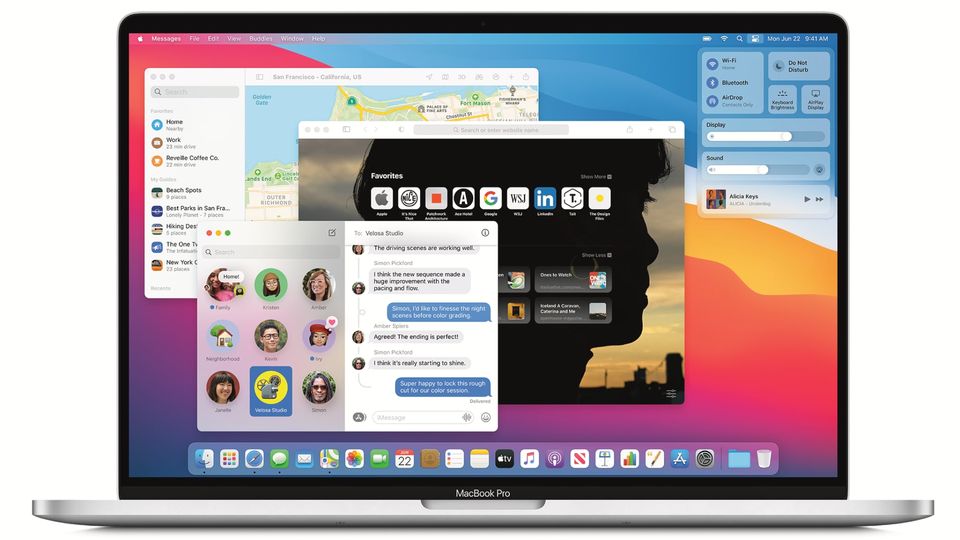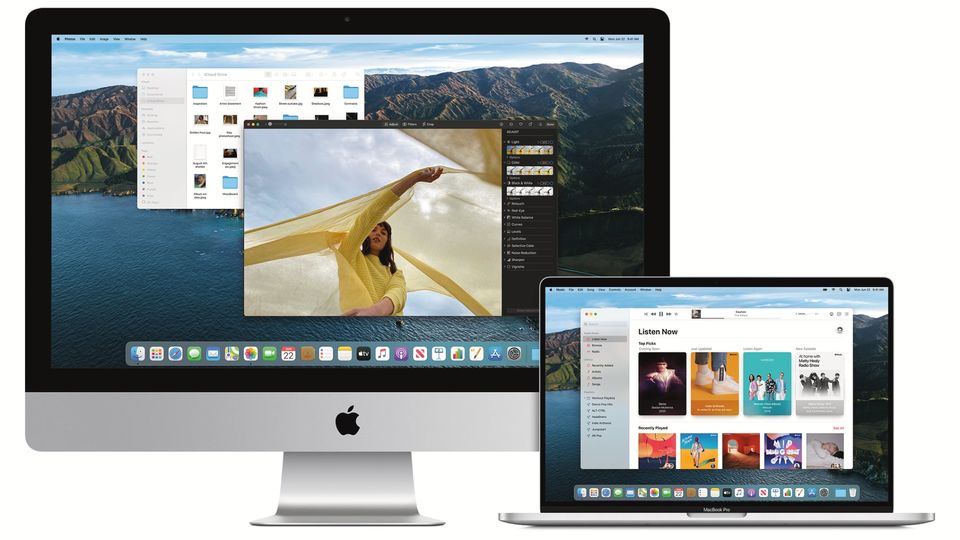Revealed: November 11 launch for three 'Apple Silicon' MacBooks
Get ready for a new wave of Apple laptops with higher performance and longer battery life.

Apple will next week pull back the curtains on three new Mac laptops powered by the company's own ARM processors, a move which marks the breakup with longtime chip partner Intel.
An online event dubbed "One more thing" – a nod to founder Steve Job's famous end-of-keynote catchphrase – in the early hours of Wednesday November 11 (EST) is expected to see three notebooks take centre stage.
One will be a 13-inch MacBook Air aimed at the mainstream market; this will be flanked by more muscular 13-inch and 16-inch MacBook Pro models.
They'll all be running processors designed by Apple, using the same ARM platform as the company's iPad and iPhone devices, with reports pointing to a souped-up version of the latest iPad's A14 powerplant. The new machines will also have Apple-designed graphics and machine-learning processors.
Apple's ARM play is expected to provide increased performance, extended battery life, improved software-hardware integration at the MacOS level and potentially even reduce the price, as Apple will control the supply chain rather than buying chips from Intel.
Beyond the processor switch, the laptops are unlikely to see significant design changes. An Apple spokesperson declined to comment.
Apple will unwind its 15-year relationship over the next two years until the company's entire line of laptops and desktops switches to ARM technology.
This will give Apple more control over its own hardware, rather than being tied to Intel's development and release schedule, and allow a greater margin and more price flexibility by reducing unit costs.
New Macs, new MacOS
Early 2021 is expected to see the first iMac on Apple silicon and potentially a 14-inch MacBook Pro.
Apple engineers are also currently developing a new ARM-powered Mac Pro, said to be similar to the current design but about half the size, due to the increased power efficiency of the ARM processors requiring less cooling.
The launch of the new MacBooks will be accompanied by the debut of the latest MacOS 11 'Big Sur' operating system, which has been redesigned to look and work more like its iPhone and iPad counterparts including translucency, notification bubbles and widgets.

The Messages and Maps apps will gain many of the features available in their mobile counterparts, and the Safari web browser will get a translation tool, changes to tabbed browsing and a customizable home page.
Standardising on ARM across all three devices will make it easier for iPhone and iPad software developers to modify those apps to run on Mac, while cornerstone companies such as Adobe and Microsoft also plan to release ARM editions of their most popular programs,
The new Macs will be able to run apps written for Intel chips through built-in Rosetta 2 'translation' software, albeit at slower speeds compared to native ARM apps.
Intel has supplied its Core processors to Apple since 2006, when the company moved from the PowerPC platform, but Apple has become concerned with the relatively slow advance of Intel's architecture while continuing continuing to forge ahead on its tailor-made A-series processors.
From 'Intel inside' to Intel on the outer
The partnership between Apple and Intel was formed in 2005, when Steve Jobs outlined a move away from PowerPC processors onstage at the same Apple event series for developers. Intel helped Apple catch up to Windows computers, some of which were more powerful at the time.
In tandem, though, Apple was working on more energy-efficient chips for mobile devices based on ARM designs and continues to use those to power the iPhone and iPad.
In recent years, the speed and power efficiency of Apple’s mobile chips have rapidly increased, while the pace of improvement to Intel’s parts has slowed. This irked Apple executives, who pushed the company’s silicon unit to develop more powerful processors fit for the Mac, people familiar with the matter have said.
Apple has less than 10% of the market for personal computers, so the direct impact on Intel sales may be limited.
However, the change highlights a crisis engulfing the world’s largest chipmaker. It has delayed a new manufacturing process, giving rivals a chance to catch up.
These problems are at least partly behind Apple’s decision to move to in-house chips, although the company has been steadily shifting to this approach for years.
Could PC makers follow Apple's lead?
Intel's bigger concern is that Apple could embolden other computer makers to make similar moves, he said. “Now you have an actual PC that can run on something that’s not Intel.”
Intel, the world’s largest chipmaker, has shrugged off attempts to unseat its dominance of personal computing for decades.
Its only direct rival today is AMD, which has produced newer processors that have begun to take share over the last two years. But AMD’s revenue is still less than 10% of that of Intel.
Other efforts to break Intel’s lucrative grip on computer processors haven’t made much of a dent.
Microsoft has a version of Windows that works with chips made by Qualcomm, and PC makers, including Microsoft itself, have made laptops based on that combination.
Those products are praised for their battery life but haven’t grabbed significant market share. The Qualcomm processors are based on the ARM technology that Apple uses in its semiconductors.
While Intel’s grip on the market is largely intact and its earnings continue to grow, analysts have seen signs of slippage. Most of that stems from persistent delays in introducing new production techniques.
Once the leader in the crucial means of making processors faster and more efficient, Intel now trails Taiwan Semiconductor Manufacturing Co., the producer of all Apple-designed chips.
Those slip-ups may have accelerated Apple’s departure from Intel, said Matt Ramsay, an analyst at Cowen & Co.
Ramsay says Apple is a technology leader partly because of its control over both the software and hardware and its willingness to replace suppliers when it spots a vulnerability or an advantage elsewhere. “Their reputation with suppliers is of being somewhat ruthless,” said Ramsay. “It looks like another consequence of Intel’s execution challenges.”
Additional reporting by Bloomberg


Qantas - Qantas Frequent Flyer
14 Jun 2014
Total posts 19
Will they still be able to run Windows with these chips?
Qantas
03 Mar 2015
Total posts 20
Doubt it. You will probably need to run Parallels to be able to run a Windows OS on the new Chipset.
Hi Guest, join in the discussion on Revealed: November 11 launch for three 'Apple Silicon' MacBooks